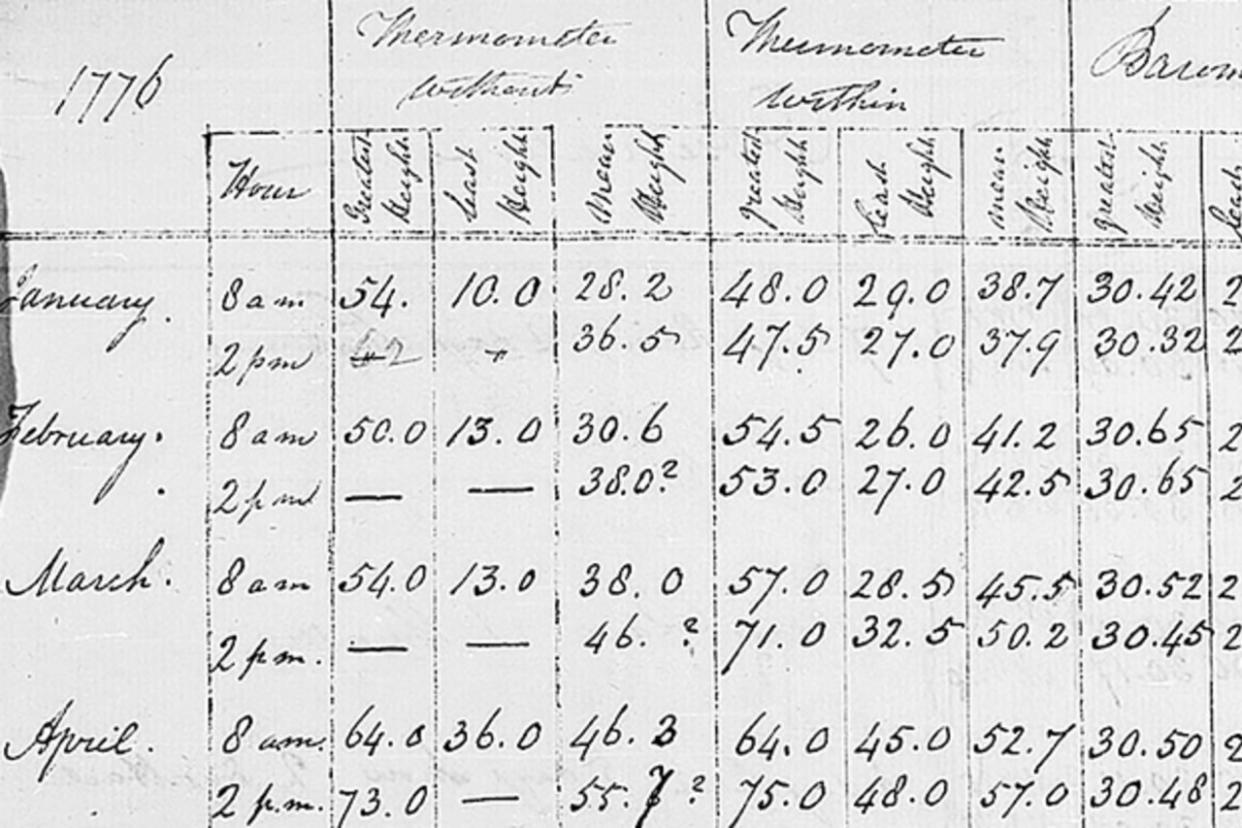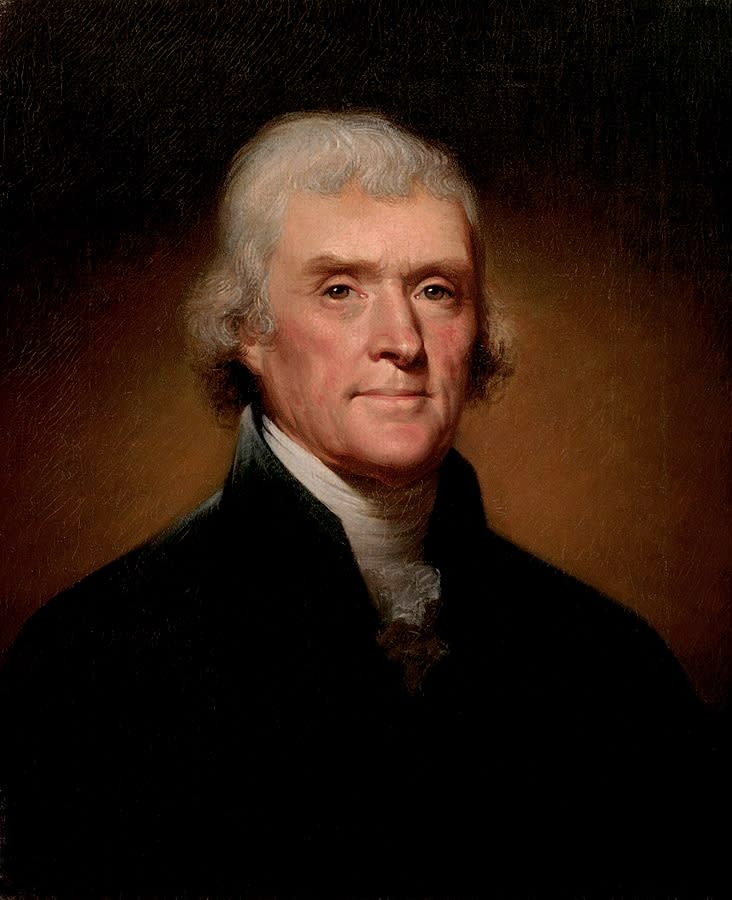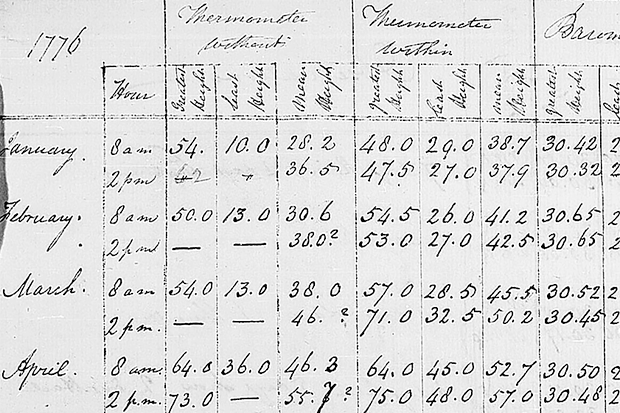Thomas Jefferson logged the weather twice daily up until a week before he died

- Oops!Something went wrong.Please try again later.
This Day In Weather History is a daily podcast by Chris Mei from The Weather Network, featuring stories about people, communities and events and how weather impacted them.
--
On Thursday, June 29, 1826, Thomas Jefferson (April 13, 1743 – July 4, 1826) recorded his last entry in his weather observation log. This was six days before his death. Jefferson, was a Founding Father of the United States and the country's third president, from 1801 to 1809. He also kept a thorough diary of his meteorological observations.
For more than 50 years, Jefferson actively observed weather to better understand the American climate.

"Thomas Jefferson. Portrait by Rembrandt Peale, 1800. Courtesy of Wikipedia
Jefferson started a meteorological diary before 1776. He recorded Virginia's weather and other climate-related observations at Williamsburg and Monticello.
From 1776 onward, Jefferson kept a consistent record of his weather observations in America, Europe, and around the mid-Atlantic. He noted information like precipitation levels and temperatures.
According to The Jefferson Monticello, the third president shared, "My method is to make two observations a day, the one as early as possible in the morning, the other from 3. to 4. [o']clock, because I have found 4. [o']clock the hottest and day light the coldest point of the 24. hours," adding, "I state them in an ivory pocket book in the following form, and copy them out once a week."
Jefferson also tried to record data on wind and humidity but didn't have the perfect tools to do it. The anemometer (the instrument used to measure the speed of the wind) was invented in 1846 and the hygrometer (the instrument used to measure the amount of water vapour in the air) was invented, but it wasn't perfect.

"Thomas Jefferson's weather log book with observations from 1776 [is] part of the U.S. historical climate record." Courtesy of NOAA.
Jefferson thought that meteorology experienced the least progress of any science in his lifetime. He tried to enroll other people to help further data collection. In the 1770s, Jefferson planned to give a thermometer to a deputy in each of Virginia's counties. They were supposed to record their temperature and wind observations twice a day. The project was interrupted by the Revolutionary War.
Jefferson was never able to see a national commitment to weather observations. The National Weather Service now has more than 12,000 stations and credits Jefferson as one of the first to record consistent meteorological diaries.
To learn more about Jefferson's weather diaries, listen to today's episode of "This Day In Weather History."
Subscribe to 'This Day in Weather History': Apple Podcasts | Amazon Alexa | Google Assistant | Spotify | Google Podcasts | iHeartRadio | Overcast'
Thumbnail: "Thomas Jefferson's weather log book with observations from 1776 [is] part of the U.S. historical climate record." Courtesy of NOAA.

